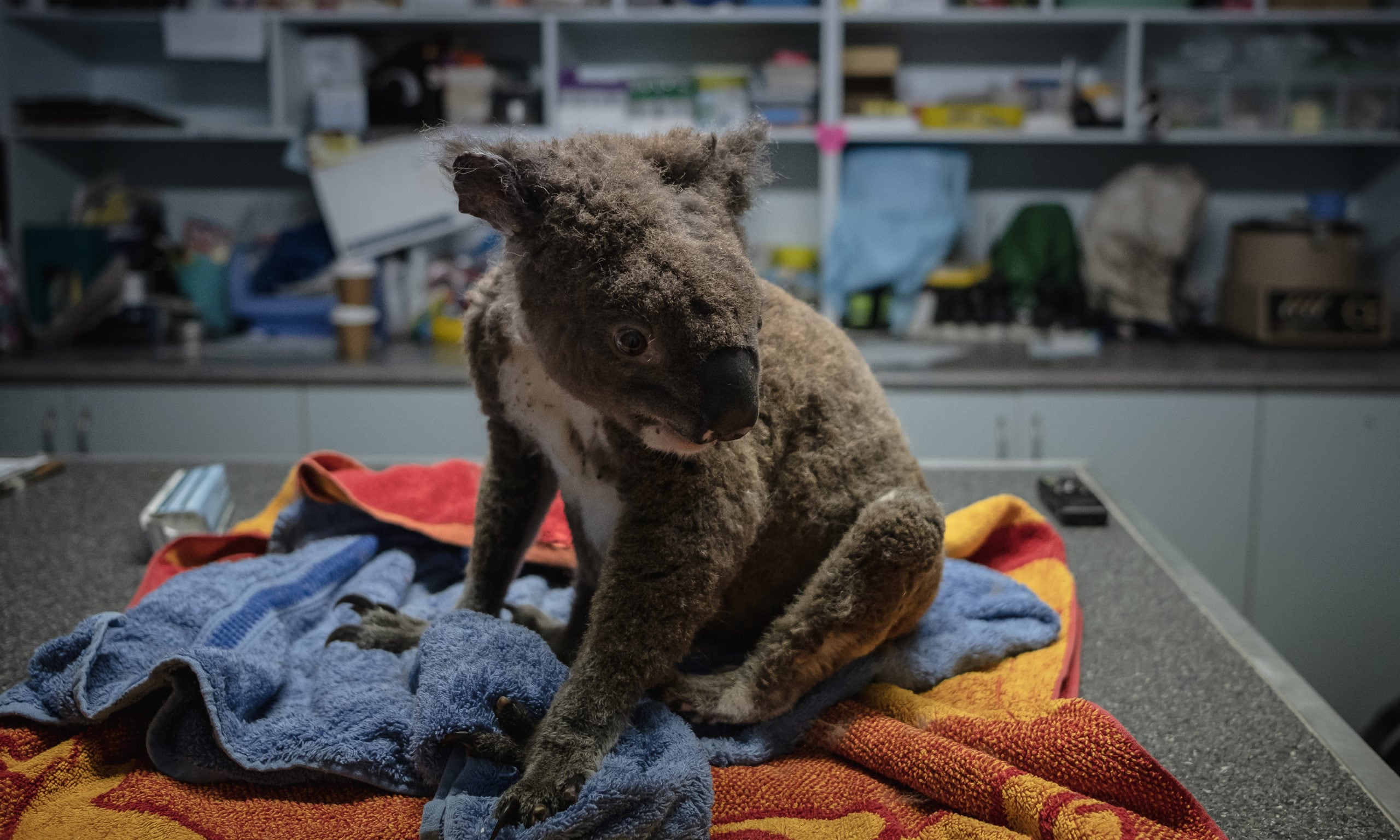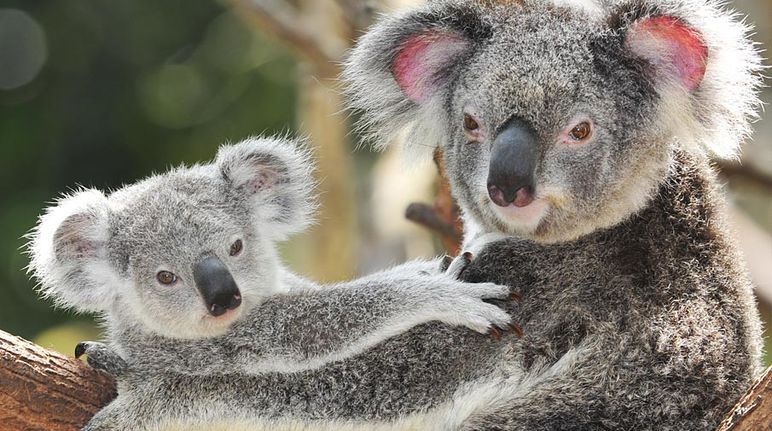
They have an acute sense of smell which also helps them detect other koalas and their favourite food trees. They have excellent hearing which helps them detect predators and other koalas. Koalas have poor vision and rely heavily on their other senses.

For the koala, this feature enables them to wedge comfortably in tree forks for long periods of time, whereas the wombat uses its hard bottom as a defence mechanism. Koalas have particularly hard bottoms, which is similar to their closest relative, the wombat.

They have no fur on their nose or the palms of their paws. Their fur is usually grey-brown in colour with white fur on the chest, inner arms, ears and bottom. Koalas are well-known for their large round head, big furry ears and big black nose. In Queensland, the greatest concentration of koalas is in South East Queensland where they now compete for space with a rapidly growing human population. There are no fossil records of koalas ever living in Tasmania. Fossil records indicate that many years ago, the koala inhabited parts of Western Australia and the Northern Territory. Local extinctions have occurred due to clearing and fragmentation of eucalypt woodlands and forests for agriculture and human settlement. Over the past 200 years, their distribution does not appear to have reduced, however, individual koala populations have declined. The distribution of koalas covers much of Queensland, New South Wales, Victoria and a small area in South Australia. They do, however, remain in areas where their habitat has been partially cleared and in urban areas. Koalas are found in higher densities where food trees are growing on more fertile soils and along watercourses. Koalas live over a range of open forest and woodland communities but ultimately their habitat is defined by the presence of a select group of food trees. Koalas may also live in urban areas Habitat and distribution In 2012, the Commonwealth Government listed the koala as ‘vulnerable’ in Queensland under the Environment Protection and Biodiversity Conservation Act 1999 (Commonwealth). Under Queensland’s Nature Conservation Act 1992, koalas are listed as vulnerable state-wide and are a protected species. They share a number of characteristics with wombats, who are their closest living relatives, including a backward-facing pouch. They are so different from any other marsupial, however, that they have been classified into their own family, called Phascolarctidae. Koalas are a type of mammal called marsupials, which give birth to underdeveloped young. In South East Queensland, koalas are called dumbirrbi in the Jagera language, marrambi in the Yugarabul language, borobi in the Ugambeh language, and dumbribbi in the Turrbul language. The word koala is said to come from the Dharug peoples (whose traditional lands span the area from Parramatta to the Blue Mountains of New South Wales) word meaning ‘no water’. Species: cinereus meaning ashy-grey (derived from Latin). Genus: Phascolarcto – phaskolos meaning pouched arktos meaning bear (derived from Greek). Air monitoring programs and investigations.COVID-19 information for environmental authority holders.Apply, renew or register using Online Services.Statistically, the results suggest that people born in Australia are significantly less likely to be attacked by drop bears. In a second study sample, a number of Australian-born research assistants were monitored and their data compared to that of assistants of international descent. “They do not stray far from a relatively small number of trees in close proximity that are used as hunting ground.” Australians less likely to suffer attacks from drop bears “Drop bears are known to be very territorial,” says Volker. The findings, published in the journal Australian Geographer, have revealed that six drop bears inhabit the study area. Members of the research team were tracked using GPS devices, and dispersed in the study area. The location and timing of attacks is then used to map the animal population,” he says. “It involves tracking the prey, rather than the predator.


Given that ordinary GPS tracking is difficult to apply to tree-dwelling animals, Volker came up with a new approach to study the animal’s behaviour.


 0 kommentar(er)
0 kommentar(er)
